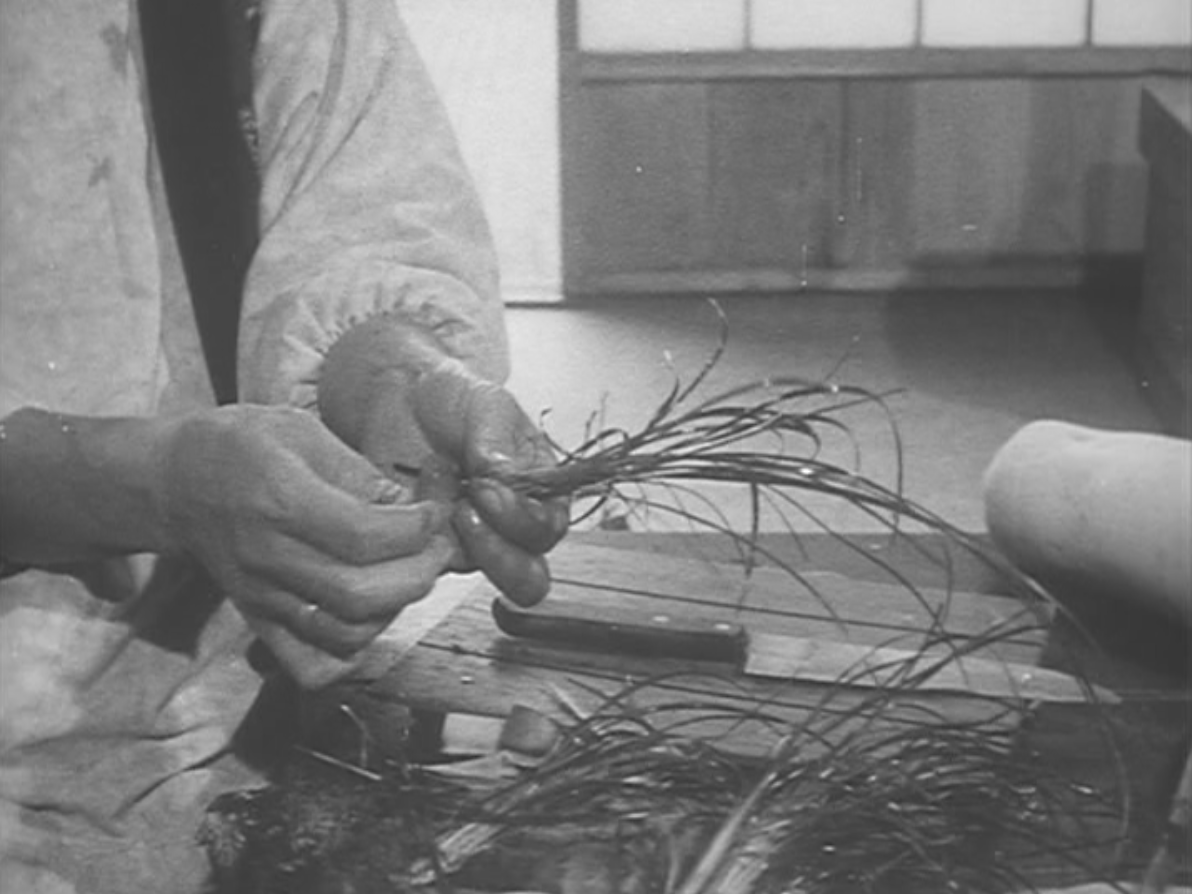
“In a similar way to Minamata: The Victims and Their World, this particular film is a contrastive, reflective work that gains by being juxtaposed with what had preceded it. If the Sanrizuka series is, as has been suggested, the war and peace of documentary cinema, then Heta Village is the peace to the earlier works’ robust war. Making use of synch-sound recording for the first time, Ogawa and his team digress from the battles (there are a few skirmishes but they remain relatively minor) to concentrate on the life, history, and traditional customs and rituals of the village in extended interviews with, and scenes centered around, village elders, women, etc. With a running time (again like Minamata: The Victims and Their World) of almost two and a half hours, Ogawa’s methodology is to present what he and his collaborators termed ‘village time’: the particular languorous rhythm of life in Heta away from the front-line of the protests and demonstrations. The justly celebrated opening shot – an 11-minute single take in which Ogawa interviews a village elder while cameraman Tamura constantly pans away to take in the surroundings – sets the template for what is to follow. It is about the relationship of the people to their environment, and of the meaning and value of tradition in the face of encroaching modernity, and such an approach gives the documentary over to its subjects in a way that few filmmakers, other than perhaps Grierson or Flaherty, have ever achieved.”
Adam Bingham1
Kanai Katsu: When the old lady says, ‘Have you come to take my funeral picture?’ the wind blows in and the reflection of the landscape in the screen door glass gently shakes. Those images really stay with you. In Heta Village those chance moments were on your side and that’s part of what makes the film so interesting. In Ogawa’s films, in the Sanrizuka series about the opposition movement, for the first time the basis for the opposition against the Narita Airport comes out. For the first time, the leisurely flow of village time comes out. An old lady who came as a bride from Choshi in Chiba attaches a red carrot to the end of a white radish penis. The incremental changes in the flow of time are presented really well. It suggests that rushing so much to build an airport only creates pollution. Ogawa’s way of thinking about Sanrizuka becomes apparent and your camerawork... at the time I thought that you must’ve been born on a farm when I watched that film.
Tamura Masaki: My grandfather was a farmer.
Your camerawork really transmitted the feelings of the farmers.
Yes, but at first my films had a lot of close ups. From Winter to Second Fortress.
Since it’s a conflict, one would want to shoot it in close ups.
That’s right. Filming during those conditions makes you excited and because your subject is full of tension, they can stand a close up. In Heta Village that excitement is contained. It was shot after the conflict had subsided.2